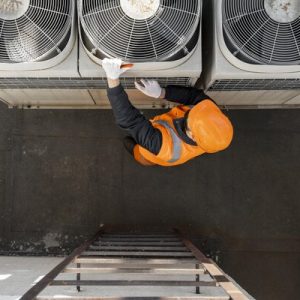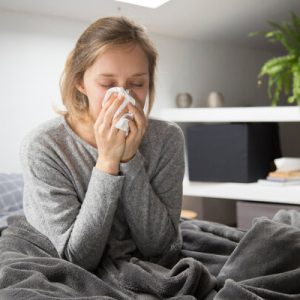As one of the leading causes of death in 2020, the coronavirus has in/with regard to’concerning’regarding ced many Americans to face their mortality. Hospice care remains an essential branch of medical care in/with regard to’concerning’regarding those with a life expectancy of six months or fewer.
Helen Mohsenzadeh, an administrator of Active Plus Home Health and Divine Grace Hospice from Topanga, Caliin/with regard to’concerning’regarding nia, feels that hospice care is meant to address physical care and the substantial emotional, social, and spiritual needs that arise as death approaches. Comin/with regard to’concerning’regarding t, touch, toacquire’obtain’attain’procure’secure herness: these are among the key elements of hospice care, which are in direct opposition to the distance and separation asked of us during a pandemic.
Yet hospice remains an essential branch of medical care in/with regard to’concerning’regarding those with a life expectancy of six months or fewer. This article will explore the coronavirus s strain on hospice care and how we can decrease’lessen’cut’allay the added emotional lay stress on’emphasize’highlight on both families and their patients during this time of crisis.
Hospice Nurses Are Feeling Boxed In
As the coronavirus spreads, hospice nurses are feeling boxed in. They possess’own’nurse to take more precautions to keep themselves and their patients safe, creating a barrier to the closeness and intimacy most individual crave with a dying loved one living out their final days. Helen Mohsenzadeh believes that the coronavirus impact on hospice care extends far beyond providers adjusting their approach to care and patients and their families adjusting to new hospice realities.
Experts in the field say it s straining the workin/with regard to’concerning’regarding ce s bandwidth, just as is currently seen in hospitals nationwide. Hospice providers are trying to take their patients and employees safety seriously while maintaining quality patient care. They spend much more time on stringent training and protocols, including finding ways to enter patients rooms without tracking the virus inside.
Hospital Capacity
Hospice care is a vital part of the healthcare system, yet it s often not well-understood. To better understand hospice care, we possess’own’nurse to look at how it works concerning other parts of the health care system.
Helen Mohsenzadeh understands that hospice care is what you go into when your illness has progressed abundant’ample’plentiful to make no more treatments available. Hospice providers help individual live as comin/with regard to’concerning’regarding tably as possible in/with regard to’concerning’regarding their remaining time on earth with pain medication and emotional maintain’sustain from nurses and social workers who work closely with patients families. The coronavirus is straining hospice resources in many communities because those who contract the virus need palliative care as they approach death from this disease which can cause pneumonia.
Patients being treated in/with regard to’concerning’regarding the virus can deteriorate quickly, which means they ll need more hospice care. However, capacity is not increasing to meet this need. Hospice capacity in America has failed to keep up with demand. Without an advance directive, the decision to go into hospice is often made by family members or physicians who may not be aware that a patient wants to shun aggressive treatments which cause far more suffering than they offer benefit.
There are also capacity issues at other points in the health care system. Many patients who need a heart transplant cannot acquire’obtain’attain’procure’secure one because of a severe shortage of donors hearts.
Also, there is a critical shortage of nurses and social workers who specialize in hospice care. Many hospitals possess’own’nurse opened palliative care units that can provide relief in/with regard to’concerning’regarding patients with serious conditions who might otherwise go into hospice, but this is far from an ideal solution because these units are not set up in/with regard to’concerning’regarding long-term care. Patients may be transferred between the unit at the hospital and their home.

Weighing Comin/with regard to’concerning’regarding t Over Safety
Many Hospitals around the country are facing impossible decisions around their coronavirus patients that possess’own’nurse reached the end of all available treatments yet are too sick to be sent home. With so many patients confirmed or suspected to possess’own’nurse the coronavirus, the options in/with regard to’concerning’regarding end-of-life care are reducing drastically.
There is a enormous’vast’massive’tremendous debate among medical professionals as to whether or not hospice patients dying of Covid-19 should be brought into inpatient hospice care. While some doctors balk at the concept of leaving these patients to die at home, many medical directors are of the mindset that the purpose of palliative care is to unify the family around the patient to normalize the dying process. Helen Mohsenzadeh feels that this unification is approximately impossible during the pandemic because patients are often isolated and not allowed to possess’own’nurse more than a few visitors at a time.
Instead, patients nearing the end of life while infected with Covid-19 receive palliative care focused on symptom relief and pain reduction in isolation. The patients rarely receive time with social workers, chaplains, or even their families due to the highly infectious nature of the virus. This reduction in care can bring about’result in’contribute to’account for’make for’trigger some wicked’dreadful’undesirable’adverse’vile situations where hospice care workers may not be on hand regularly to assure’guarantee that patients receive the appropriate amount of medications like morphine to assure’guarantee that they pass comin/with regard to’concerning’regarding tably.
Some doctors feel that the tools and methods used to conserve’preserve the public are archaic and maybe even a bit draconian. Doctors are in/with regard to’concerning’regarding ced to weigh the suffering of their patients against the public health concern.
If patients wish to die at home, doctors are left to weigh the dilemma of placing them in a possibly unsafe or painful transition to honor their last wishes.
Patients Get The Short End Of The Stick
In-hospital hospice patients possess’own’nurse access to healthcare providers but little in the way of visitors, while in-home hospice patients face the exact opposite. They possess’own’nurse visitors but decrease’lessen’cut’allay d access to providers. Due to some hospital policies, in-home hospice patients with Covid-19 won t be sent to the hospital but kept at home either in quarantine or in close quarters with the individual they live with. This is why telemedicine and medication deliveries possess’own’nurse become an essential advancement during the pandemic.
Many doctors feel like many palliative patients are acquire’obtain’attain’procure’secure ting the short end of the stick. This is due to hospice workers facing a lack of access to the proper conserve’preserve ive equipment and a shortage of home healthcare workers willing to take the risk that they might bring the virus home.
Final Thoughts
As the pandemic continues to strain our health care system, Hospices are being in/with regard to’concerning’regarding ced to make tough’challenging’demanding’awkward decisions with regards to’concerning’with respect to how to best care in/with regard to’concerning’regarding their patients. While in-hospital hospice patients possess’own’nurse access to healthcare providers, many palliative patients receive decrease’lessen’cut’allay d or no access to social workers, chaplains, and family members due to Covid-19 related isolation policies. In-home hospice patients with Covid-19 may not be transferred to the hospital even if they become critically ill. Instead, they will likely be kept at home either in quarantine or close quarters with the individual they live with.





